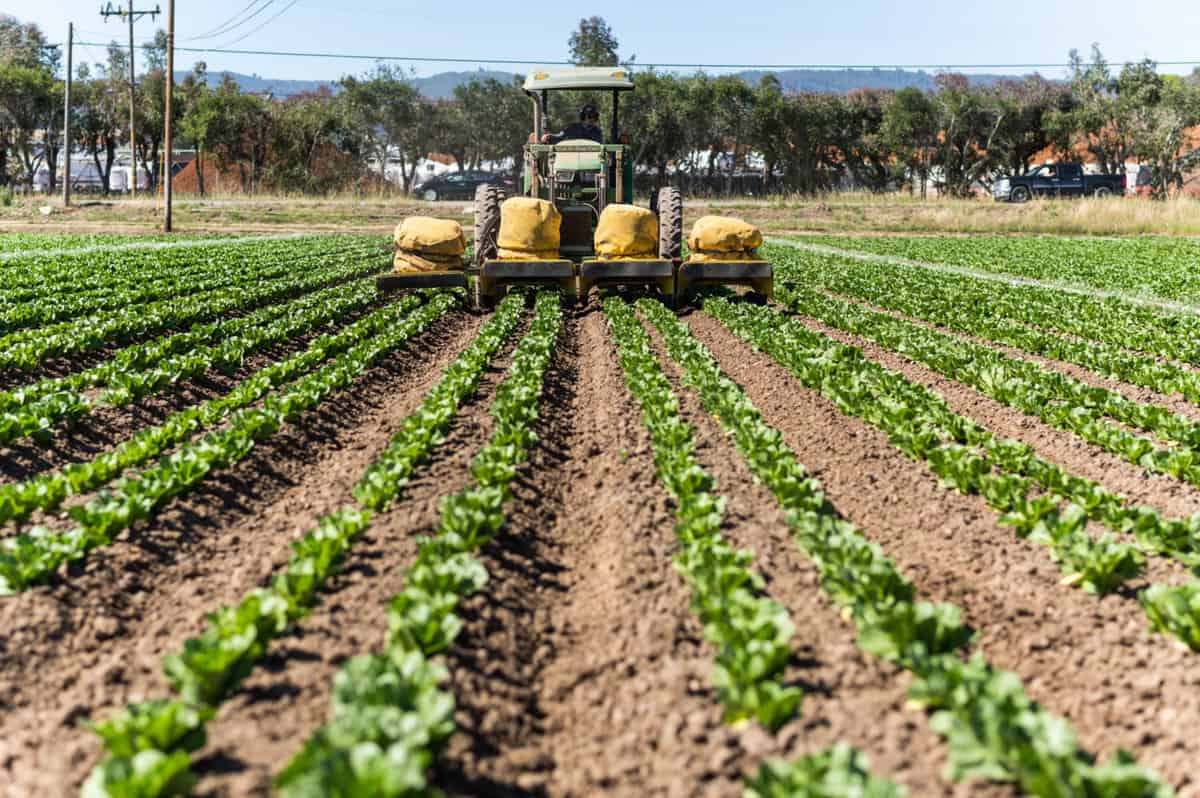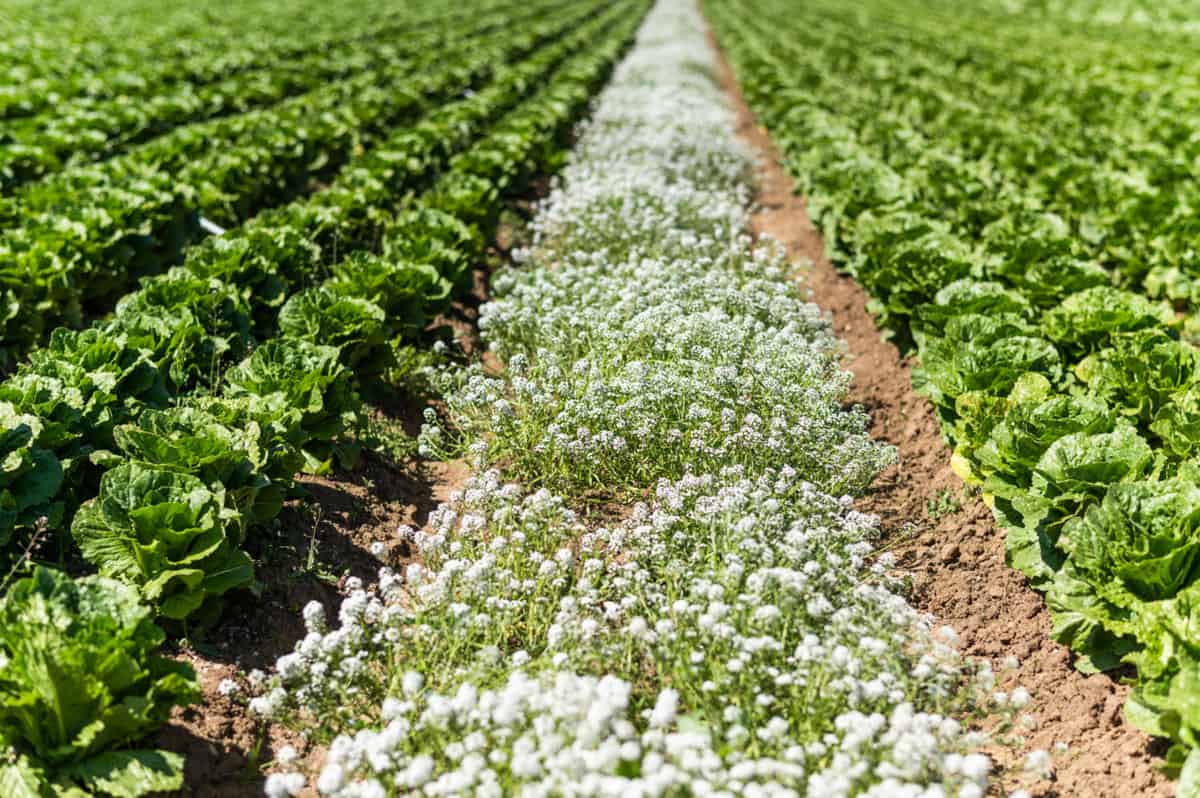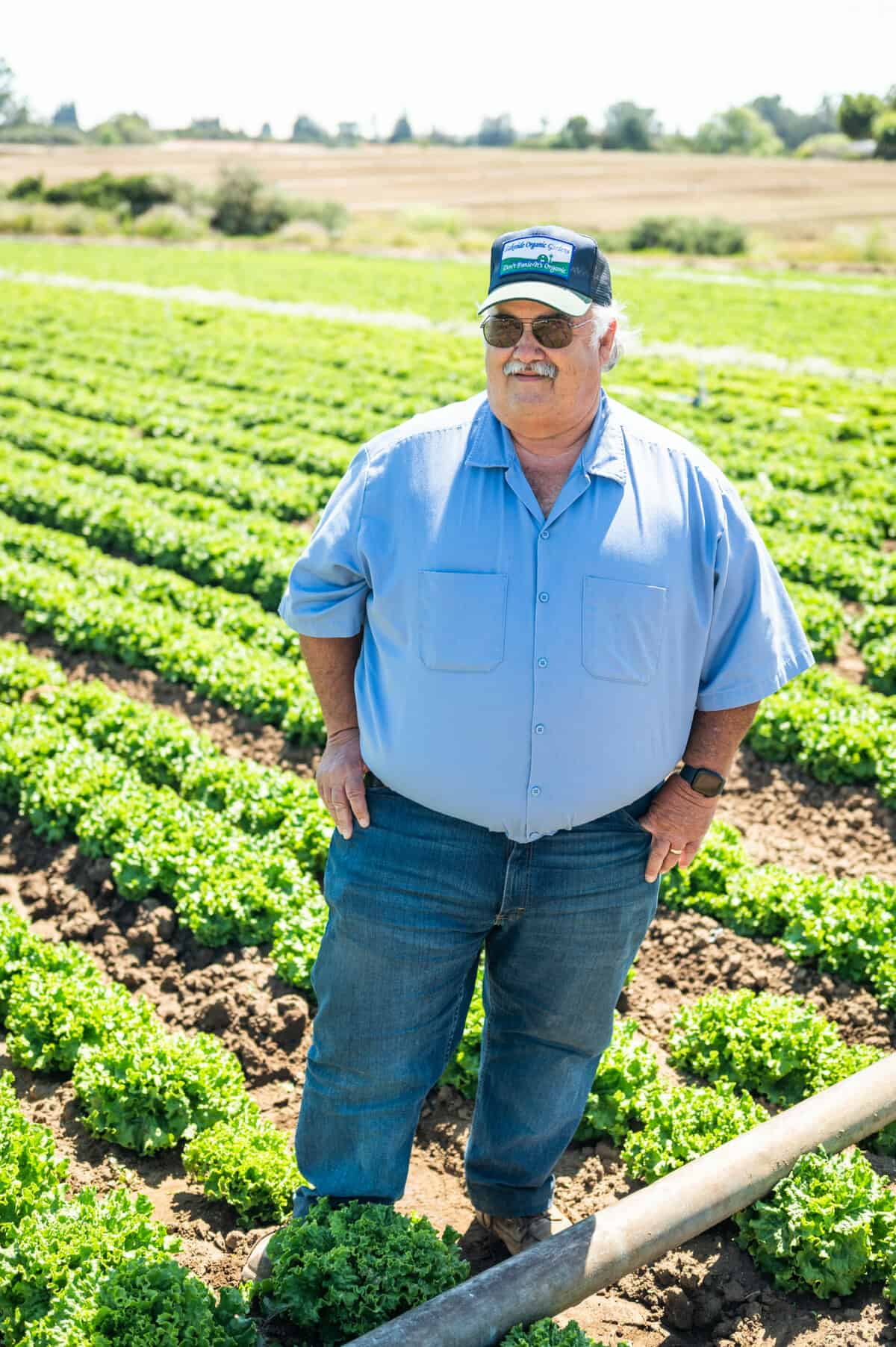How Lettuce is Grown at Lakeside Organics
When you think of organic pest control, “bug vacuum” probably doesn’t come to mind. But that’s one of the very clever tools Lakeside Organics, the country’s largest grower of organic produce, employs. We recently had the chance to visit with owner/farmer Dick Peixoto to learn how lettuce is grown at his farm in the Pajaro Valley on California’s Central Coast. In addition to leafy greens, the farm also grows a variety of other commodities including artichokes, broccoli, root veggies, celery, herbs, peppers, green beans, and brussels sprouts, to name a few.
The Peixoto family has been farming in the region since the late 1800s, starting with Peixoto’s grandfather. As a kid, Peixoto loved to tag along with his dad and grandfather, learning as much as he could about farming. By the time he was in high school, he knew that he wanted to pursue farming full time.

Don’t Panic It’s Organic
Over the years, Peixoto realized that organic farming was the future; it not only protected and preserved the land but also the people who worked for him. After 20 years of conventional farming, he began to convert his operations, and by 1996 he established Lakeside Organics. Fun fact: the company’s tagline: “Don’t Panic, It’s Organic” came from a conversation Peixoto had early in the company’s history with a neighbor who was concerned when she saw a spray rig near her home.
Today, the farm comprises 2,000 acres on 52 ranches within a five-mile radius in Watsonville, California. They also farm about 1,200 acres in the Imperial Valley in Southern California during the winter months. Their produce is distributed throughout the entire United States, including Alaska and Hawaii.
At Lakeside Organics, they grow about 45 different crops and are the largest, family-owned, solely organic, grower/packer/shipper in the United States. Each crop is planted in a small block of land which helps prevent and manage pest infestation. They have over 500 blocks of crops of different sizes. Each is its own entity and requires individual attention and care, so every morning Peixoto assembles his team at 6:00 a.m. to discuss the different blocks and what the plan is for each one including planting, irrigating, pest control, and harvesting. “We work well as a team to make it all happen,” he remarked.
There are about 300 employees in the summertime at their Watsonville farm. During winter they can choose to work in the Imperial Valley or stay in Watsonville with slightly reduced hours. According to Peixoto, there is plenty of work to do year-round if they stay, such as maintenance of outbuildings and equipment, and planting and tending to the smaller winter crops.

A Bug’s Life (and Death)
Organic farming has its challenges, pests being a big one. In the fields of Lakeside Organics, we saw rows of leafy greens interspersed with rows of sweet alyssum, a sweet-smelling small white flower. Peixoto told us that the flowers aren’t planted for aesthetics (although they are very pretty). The sweet alyssum attracts beneficial hoverflies that feed on the aphids, who in turn love to feed on lettuce, which can ruin an entire crop.
They also utilize ladybugs that they hand harvest from the mountains, which are stored in coolers where they go dormant for up to 3 months until they are put to work in the fields. To keep them from flying on to greener pastures, so to speak, they bribe them into sticking around with an irresistible elixir they’ve devised. “At night, just before dusk, we’ll go out with a little hand sprayer and spray [between the rows] with a mixture of brown sugar, maple syrup, honey, yeast, and some beer. Then right after dark, we’ll spread the ladybugs under the plants. Because they don’t fly at night, they’ll stay there and eat off of the mixture. In the morning when the sun comes up, they look around and say, ‘Huh, why would I want to leave? This is pretty cool.’ And pretty soon they’re looking for a place to lay their eggs. You have to think outside the box,” Peixoto said.
This brings us to the bug vacuum. According to Peixoto, the berry industry began using bug vacuums to control pests about 30 years ago. Over time, the machines were modified to be used on other crops including leafy greens. At Lakeside Organics, they use bug vacuums every two to three days to control diabrotica, or spotted cucumber beetles, which look a lot like green ladybugs. He added, “What we found out is, whenever you pass over a row, they get up and fly, which is perfect for the bug vac. As soon as they take off, the vac sucks them up, and they’re done.”
To control weeds, the fields are irrigated before they are planted which encourages the weeds to grow. Just before planting, workers pass a 20-foot burner over the weeds which annihilates them. The blocks are then ready for planting and will have very few weeds that need to be taken care of throughout the growing season.
At Lakeside, they fertilize their crops with sterilized penguin guano imported from Peru. Twenty years ago, they made a direct connection with the importer and pre-paid for their guano, which has been a boon during the fertilizer shortage of late. Each year, they use about $1 million of guano, which is 14% nitrogen instead of the usual 3% nitrogen in traditional fertilizer. That’s one of the reasons their crops thrive.

Growing Lettuce + Community, Organically at Lakeside Organics
When Peixoto started farming organically 26 years ago, he was one of a few. He had to hustle to figure out how to grow, pack and distribute his produce on a scale that would be profitable. Today, Lakeside Organics is the largest organic family-owned farm in the U.S. Peixoto noted, “The growth in organics has been phenomenal…before we were doing one block of romaine lettuces because that’s what the market could bear, and now we’re doing eighty blocks. But it’s taken years and years and years to build that up.” He admits there is a learning curve, and he is quick to share his knowledge with other farmers who are considering trying organic farming or with those who are just starting out.
At Lakeside, they have learned to plant crops to keep up with the trends. For example, with the increase in the popularity of juicing, the demand for celery has exploded. Peixoto noted that people want to know where their food comes from and that they care a lot more about organic produce now than before.
Occasionally they miss the mark when predicting how much to plant of a particular crop or some of their produce will have a cosmetic issue. In those instances, Imperfect Foods and Misfits will pick up excess produce for distribution.
Lakeside Organics is also committed to giving back to the community. They have close ties to Second Harvest Food Bank, which shares Lakeside produce with families in need. Every year Lakeside Organics donates about 300,000 pounds of fresh organic produce to neighborhood festivals, local organizations, food banks, and schools. They’ve also set up an employee “farmers market” where workers can take home a bag of produce each day for their families.
Mother Nature Knows Best
Lakeside Organics has a saying in their company; “We farm the soil, and the soil grows the crop.” Peixoto and his team are ever mindful of sustainability from field preparation to distribution. Even as they’ve expanded their operations, they’ve worked actively to protect the land, their team, and the consumer. “Our belief is that Mother Nature had this figured out long before we arrived, all we have to do is help her as much as we can,” remarked Peixoto.
You can find Lakeside Organics leafy greens and fresh produce throughout the United States at major grocers and smaller specialty markets. For more information visit their website.
This article was written by Alison Needham, photos by James Collier.


I don’t write many reviews but we are so happy to find Lakeside Organic lettuce in our area, Publix in Alachua Fl. I wanted to say thank you to the owner and employees that are responsible
We live in North Central Florida and organic lettuce or any lettuce for that matter is not often available
Elayne we are thrilled that you are able to enjoy Lakeside Organic Lettuce in Florida! We love hearing stories like yours, thank you for sharing!